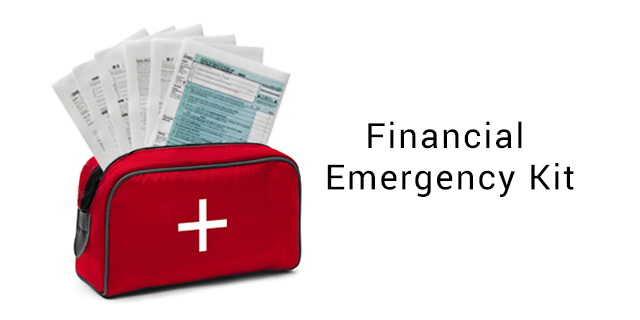SUMMARY
SO in this article…Mr. Khan tries to navigate and manage his funds in the right way to achieve his “SET FINANCIAL GOALS” which he wants to achieve for himself and his family.
To do that he takes the help of Mr Nisaar who is a financial expert and an old friend and he guides him through the ways and means by which things can become easier, it can be through a goal chart, he also mentioned that the goals can be short-term. midterm and longterm and they should be planned properly to achieve all of them at their due time.
Asians are concerned and conscious about their “RAINY DAYS” well it just means that they not only live in the present but always plan for their future while enjoying their presence. There is a very wise saying that says “A PENNY SAVED IS A PENNY EARNED”.
Their habits to save and spend wisely is ingrained from generations to generations, it is considered wise and a good move to save minimum 33% of the salary/income you earn as it would help you go through and help you plan your milestones, your children education, their wedding, vacations every year, buying a new vehicle, shifting to a new home, renovations, revamping wardrobes and so on. If you got the money there is just so many things you can do and at the same time plan your future not only plan but also be relaxed at the same time.
The millennial is somewhat not in agreement with the saving and planning being done at home the old school way rather they more look forward to it being done through proper investment channels. The channels where does not only the money multiply but there are viable returns on the money invested.
There are multiple ways that they believe could serve the purpose better, for instance, things like mutual funds, investment plans long-term, short-term, insurance-health, car, travel, term life and life insurance etc. to avoid any kind of “out-of-the-blue” burden on your pocket.
Other financial instruments include getting credit cards to avail points and discounts, getting prize bonds to have liquid cash as well as utilizing them as a point of investments, opening a savings accounts where you get a certain profit over the cash baseline maintained etc.
Well, Mr.khan is a married one, he has just turned 40 years old as he recently had his birthday where a beautiful celebration was planned by his homemaker wife and two children who are into their teens. Both children are studying and are quiet in love with their grandparents who also happen to be living with them and they also have some health issues like, diabetes and blood pressure, Mr Khan Father also has arthritis that further impairs his mobility.
Keeping all this in view, Mr.Khan on 40th has a lot to plan if he wants to live a stress-free well planned life, he has a few policies in place to take care of his immediate concerns like sending children to universities for which he has already gotten an education policy when both of his babies were born but there are other things as well that he needs to foresee, for instance, he needs to ensure that the parents are well taken care of realizing that old age brings its goodies like “health issues”. He has bought a house recently and some its payment had been financed by a bank, so he has to pay monthly instalments for that loan.
He has to save some and invest some for his retirement so he can enjoy his off-work days peacefully. Entering well into middle age he and his wife might also expect some unannounced visitors like diabetes and blood pressure or even just unknown and unspoken for health risk which they might face which can be an added expense for which he has been concerned about. He has also promised a family vacation once a year to his family that also might take a big chunk of the budget. Mr.Khan also knows and understands that lives are unexpected and take unexpected turns which may impact the whole family emotionally and financially.
Considering all this in view Mr Khan fixes a meeting a with Mr Nisaar who is an old family friend and also runs a financial consultancy firm, which helps people like Mr Khan and other to plan finances and organize all their financial concerns.
Financial Planner Mr Nisaar suggests that Khan build an emergency fund of Rs 1 Million, which is equal to six months’ of his household expenses and the loan instalments on the house, also a medical buffer of Rs 10 lakh for his parents. He suggests that he should allocate his certain percentage for his salary for this goal. He should invest the entire amount in a liquid or arbitrage fund.
At the same time, he should be seriously considering to acquire family health insurance to cover any of his unexpected medical expenses that if arise can upset his complete budget. If he acquires health insurance he can save and shift that risk at a potentially low cost.
He also reminds Mr Khan that even being all well and in his prime of health one should be prepared for the hardball life can throw so he suggests also to buy term-life insurance each year which is a small investment with quiet big returns along with his life insurance policy which shall help him and his family once the plan matures or if something unforeseen happens and his family is left in a lurch to fend themselves if something happens to Mr. khan unexpectedly.
Mr Nisaar also emphasizes the importance of investing with the right guidance and acquiring education, he also advises him to insure his assets, to that he should properly check out different insurance company plans and acquire a plan that best suits his needs and serves the purpose. He suggests Smartchoice.pk where he can find almost all the top and best insurance providers, at the same time the in-house customer support which helps people make the right decision without charging a penny extra, he explains to Mr Khan that the advantage of using such platform is that not only they can get competitive rates but they are also offered with best customer experience even from the comfort of home.
Mr Khan has been prepared to also make some changes in the way he saves and trust his friend in guiding him towards mutual funds that shall provide viable returns of his money invested in a secure and tension-free manner, without the risk of it being lost.
Mr Nisaar also encourages Mr Khan to acquire health insurance for the parents as well, as there some policies in the market provides a certain percentage coverage regarding the pre-existing conditions that one might have with age which could help attain two things, number 1 it would take some worries away from Mr Khan and number 2 the additional money that has been kept liquid as a floater can be utilized in planning for a much secure future and would some way act as a catalyst to achieve the desired financial goals.
Mr Khan is still worried and tells Mr Nisaar that, looking at his friends and some of this peers and colleagues he feels that he is far much left behind from others when it comes to financial mapping and planning, upon this Mr Nisaar assures him and describes that every individual like destiny has his journey to manage and plan finances, they cannot be compared lesson can be learned and incorporated in your while making some important and strategic decisions but the results might be different also based on the preferences and choices.
But he also tells him that few things which are important which needs to be remembered, one thing that is to be Figure out what is important to you. Put the whole lot, from the useful and urgent to the fanciful and reserved, out on the table for assessment and understanding its importance.
In your mind and sitting with your family Sort out and decipher what’s within your reach, how much time would it take to achieve that, and what should be your way forward or a long-term strategy.
Implement a SMART- goal strategy. Which is that Mr Khan whatever he foresees and has the ambition to achieve is
- Specific
- Measurable
- Achievable
- Relevant
- Timely
SMART
Apart from that Mr Nisaar told Mr Khan to achieve the set financial goals, make a budget and stick to it word by word and line by line. One cannot be successful with debts and unplanned budgets. He also emphasized that there is no problem in having and using credit cards and other financial instruments, but to live a sane a prosperous life Mr Khan must avoid “DEBT” in all manners. The debt is the killer of sound financial foundations.
Mr Naseer very clearly mentioned that Mr Khan should live below your means. It’s a simple mathematical equation. If you spend more than you earn, its debt, if you spend less than what you earn, these are your savings.
Being a friend Mr Nisaar also told Mr Khan, that even though he is always there for his kids and has been providing them with everything, but they should also develop skills not to just earn but to feel the importance and effort involve to earn money. It doesn’t mean that the children would learn skills to earn money but to feel the responsibility. It could also mean attending different conferences and workshops, a chance to networking, taking a class at the public library, anything to acquire more knowledge and feel empowered.
He said as per the famous America professor of George Washington University, Annamaria Lusardi “The bottom line is everyone can do more and everyone should do more to plan for their financial future,’’ she also emphasized that “Make a plan, then follow that plan.’’ Mr Nisaar told this to Mr Khan as he knows how it is for a professional person to go towards the upward social mobility and to then manage everything to achieve the goal in mind that is to achieve “Financial Security”.
Meeting Mr Nisaar taught a lot of things to Mr Khan and he also realized one thing that financial education is important for children and I should be inculcated well before time, so that they are well seasoned with financial understanding and if/when the time arises they can easily take charge of it and spearhead it.
He scheduled another family session with Mr Nisaar and asked him if he could brief his children and his wife regarding the finance handling and strategic and operational decision making. Mr Nisaar agreed and a meeting was scheduled, he enlightened the Khan family with some important goals that they should keep in mind and also the effort-cost-benefit analysis.
He explained that where financial planning is concerned three kinds are primarily needed to be kept in mind to understand and if these three are properly understood then it can create a path to financial goals with ease.
Mr Nisaar started by describing, that what are Short-term financial goals, their goals are taken up under one year to achieve. Examples may include going a vacation, buying a new fridge or paying off a particular debt.
Secondly, he explained, Mid-term financial goals, he said that these Mid-term goals can’t be achieved right away but also shall not take too many years to get done. Examples may include purchasing a car, finishing a degree or accreditation, or paying off some of your major debts.
The third one is Long-term financial goals (which are over five years), the long term goals may take numerous years to accomplish and, also require longer commitments and often more money is involved. Some of the examples include purchasing a home, saving for a child’s college education, or planning for a comfortable retirement.
The goal-setting process, in which you decide the parameters involved for goal setting involves deciding what goals you intend to reach; estimating the amount of money needed and other resources required, and planning how long you expect to take to reach each of your goals.
To ease this process further one must develop a Goal Chart…
Develop a Goal Chart
Developing a financial goals chart (the goals which you want to achieve) is a good way to begin this process. Here are the 5 steps you should follow to set up your goal chart:
Start with writing down one personal financial goal. It should be specific, measurable, action-oriented, and realistic and it should have a timeline (you can never have a goal which has no time constraint/limit).
After writing down the goal decide if your goal is short-term, mid-term, or long-term which category does it fall into, and create a timeline for that goal. This may change at any time based on your state of affairs.
Once you have decided the category determine how much money is required to save to reach your goal and isolate that amount by each month-wise and/or year wise.
After putting down the time and money requirement, think of multiple ways you can attain that goal. After determining that start saving, cutting expenses, earning extra money, or finding additional resources.
Sit down with a financial expert around you and decide, what is the best way to achieve your goal, and note them where you have mentioned the whole process.
All of that might sound intimidating but start with baby steps. After accomplishing some of the easier goals, you will advance in confidence and in your decision making it will motivate to achieve the more difficult targets that require more time and self-control.
Short-term Goals
Short-term financial goals tend to be narrow in scope, with a limited and restrained time horizon. Short-term goals can include purchasing household furniture, minor home improvements, saving for a car or vacation, or paying for a graduate degree.
Better still, however, short-term goals will allow an individual to get a best possible handle on their budget, regulating spending habits, eradicating credit card debt, saving a set/ pre-decided percentage of income, and/or founding emergency/rainy-day fund.
Midterm Goals
The penchant to weight financial plans around the near and long-term goals has been called the “barbell” approach. Some attention must be paid to mid-range goals those get-up-and-go things that will take 3 to 10 years to get it done.
Again, while putting it down for planning to apply SMART planning. Sidestep setting your marvels so high that frustration intrudes to short-circuit your goals.
Some examples of mid-term financial goals include saving for a down payment on a house, paying off a hefty educational loan, starting a business (or starting a second career), paying for a wedding or something as important as that, taking a dream vacation up the mountains or down the beach.
A significant mid-term goal would be developing multiple income streams and channels. This doesn’t mean working every weekend as a tutor or something. Instead, it might also mean figuring out how to monetize a leisure pursuit, or starting a side business with a skill that has not been fully capitalized.
Long-term Goals
The ultimate long-term financial goal is funding and planning a comfortable retirement. It’s never too early nor ever too late, to get the ball rolling with investment accounts.
Other long-term financial goals could include living debt-free, paying off your secured loan; taking an extensive and prolonged, once-in-a-lifetime journey; getting the children through college, debt-free; building a property would give your youngsters options in life; or leaving everything to your favourite nonprofit.
Goal Setting Tips and Resources
There are resources to help everyone stay on course. Financial apps for goal tracking can be helpful. Technology offers several goal ticklers, alerts and prompts that can provide a nice road map.
In the end, Mr Nisaar stated
Why You Should Set Financial Goals
“But what if there’s an economic downward spiral? What if circumstances change for the worst? It’s not just the number that matters in setting your financial goals. It’s the whole process itself. It’s founding good habits. If you abide by consistent saving patterns, you’ve set yourself up for success.’’
When the scale finally tips in your favour, it’s only human to seek a reward, such as some chocolate cake. That’s true in the world of finance, too. When you achieve your money goals either through incremental progress or the retirement time you reach the finish line there’s nothing wrong with celebrating “A Job Welldone”.



